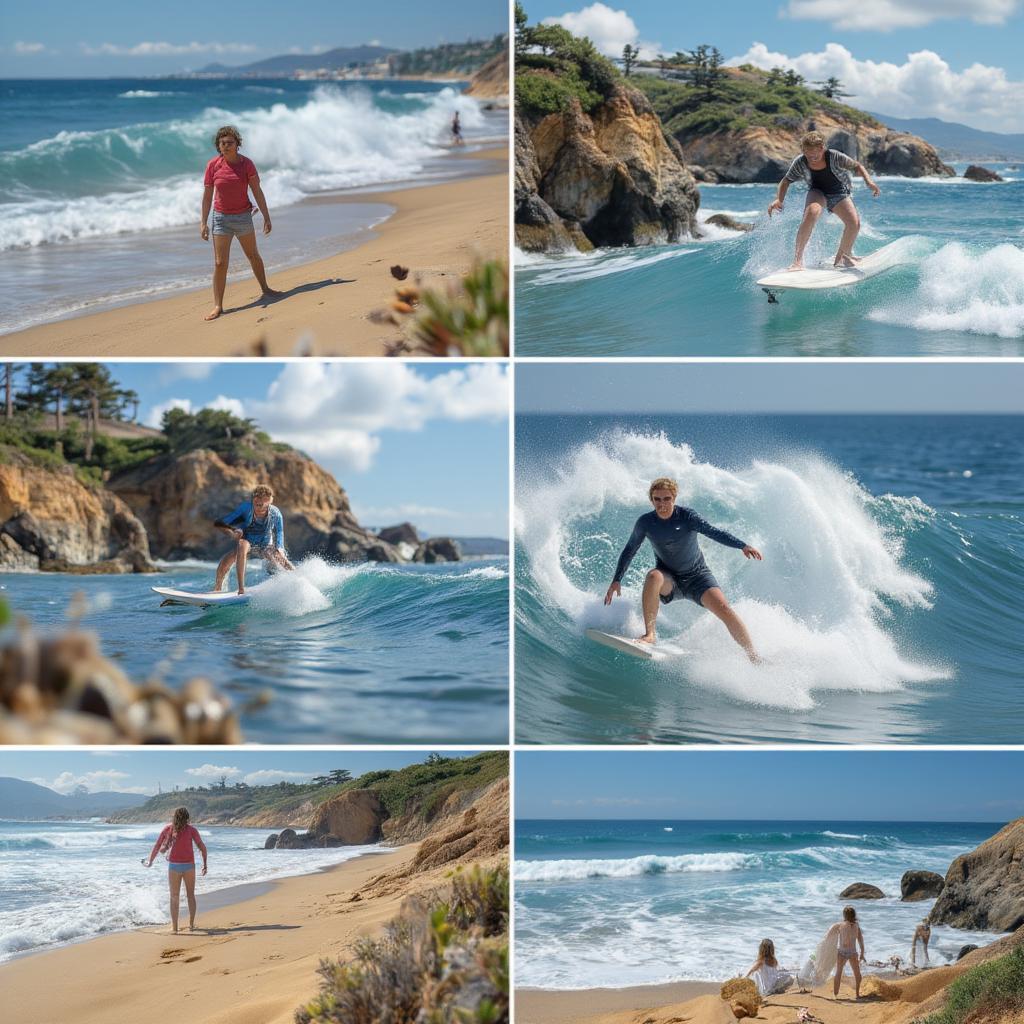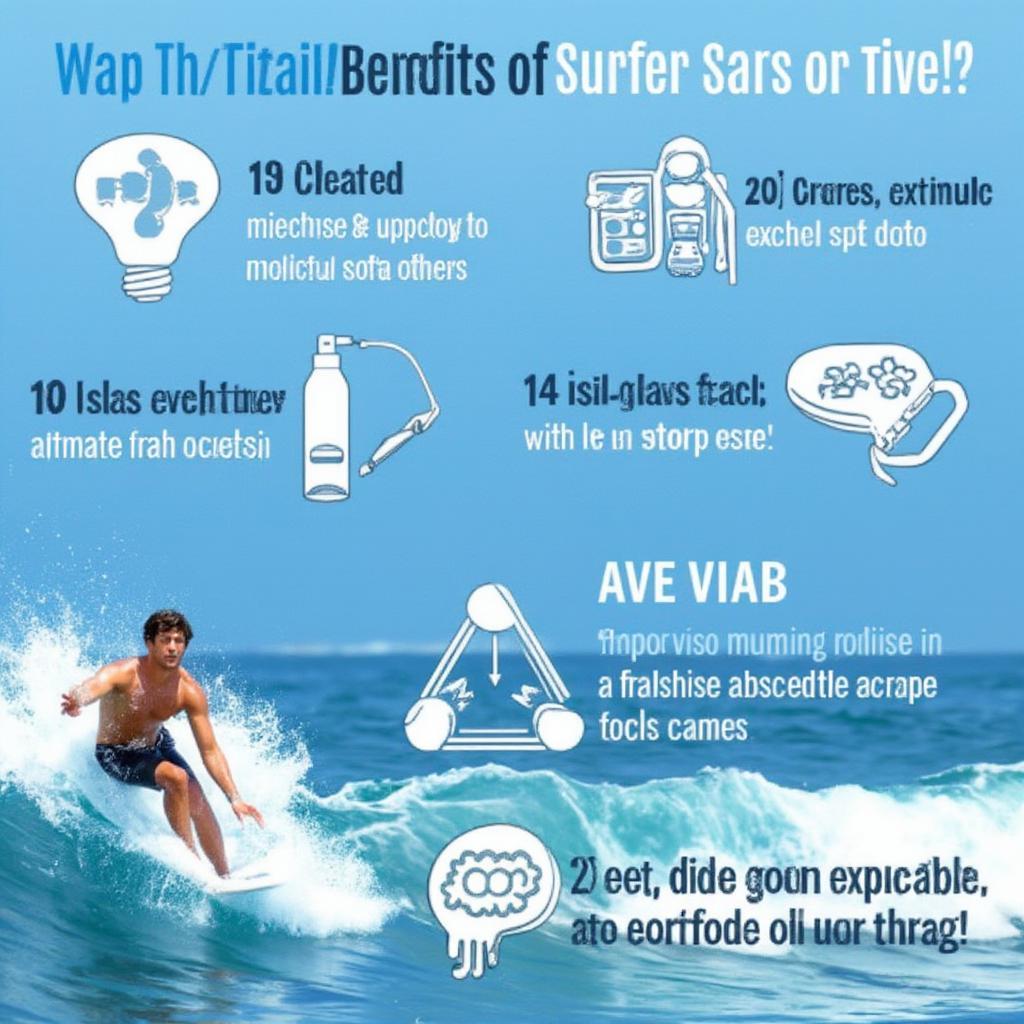Surfs Up: Catching Waves, Culture, and the Ultimate Beach Vibe

The phrase “Surfs Up” ignites a feeling of freedom, adventure, and the call of the ocean. It’s more than just a casual saying; it encapsulates an entire lifestyle centered around riding waves, embracing the beach culture, and connecting with nature. Whether you’re a seasoned pro or a complete beginner, “surfs up” speaks to the universal desire for excitement and the allure of the sea. This article dives deep into the world of surfing, exploring its history, culture, and what it means to truly experience that “surfs up” moment.
The History of Surfing: From Ancient Ritual to Global Sport
Surfing’s roots are deeply embedded in Polynesian culture. It wasn’t just a sport; it was an integral part of their daily lives and religious practices. Ancient Hawaiians rode waves on wooden boards, often made from Koa trees, as a way to connect with the ocean’s powerful energy. These early surfers were not just chasing thrills, they were masters of the sea, and surfing was a demonstration of their skill, respect, and reverence for the natural world. The practice also served as a social unifier, a way for different communities to come together and share in the joy of riding the waves. Early surfing contests, for example, were not just about individual prowess, but also about community interaction and display of artistry within the ocean.
How Surfing Spread Across the Globe
The arrival of Westerners in the 18th century initially saw a decline in surfing. However, it experienced a resurgence in the early 20th century, largely thanks to figures like Duke Kahanamoku, a Hawaiian Olympic swimmer who popularized the sport internationally. Duke showcased the thrill and beauty of surfing, sparking interest worldwide. He travelled extensively, giving surfing demonstrations and encouraging others to try it, making it more than just a Hawaiian tradition. By the mid-20th century, surfing had transformed from a niche activity into a global phenomenon, fueled by the rise of surf culture and the development of modern surfboards. The invention of lightweight fiberglass boards and wetsuits significantly expanded surfing, turning it into a recreational activity accessible to a wide variety of people.
Understanding Surf Culture: More Than Just a Sport
“Surfs up” is a declaration of a lifestyle, a cultural movement with its own music, fashion, and philosophy. Surf culture embraces a laid-back, outdoorsy attitude, focusing on connection with nature and camaraderie. It emphasizes respecting the ocean, living in the moment, and enjoying the simple pleasures of life. Think beach bonfires, salty hair, and the perpetual search for the perfect wave. The surf culture is known for its sense of community. Surf breaks often become places for gatherings, where people of different backgrounds connect over their passion for riding waves.
The Music, Fashion, and Art of Surf Culture
The music associated with surfing often features mellow tunes, reggae rhythms, and the sounds of the sea. Surf rock and indie music are common, reflecting the relaxed and free-spirited nature of the culture. Surf fashion is characterized by its practicality and comfort, with board shorts, rash guards, and casual beachwear. Art associated with surfing often features vibrant colors, images of waves, and depictions of beach life. It can be found in artwork on surfboards, clothing and posters. This unique culture, with its art and music, reinforces surfing as a lifestyle, not just a sport.
“Surfing is not just about riding waves; it’s about finding your place in the ocean’s rhythm and embracing a community that values the simple joys of life. ” – Kai Nalu, a Hawaiian surfing legend.
Gearing Up: What You Need to Catch Your Own Wave
If you’re itching to experience the “surfs up” moment for yourself, knowing what gear you need is essential. The right equipment can significantly impact your surfing experience, helping you stay safe and enjoy the waves. The first step is selecting the correct size surfboard for your ability and the conditions.
Essential Surf Equipment for Beginners
- Surfboard: Beginners should opt for a larger, more stable board called a longboard, which helps with balance and paddling.
- Wetsuit or Rash Guard: Wetsuits provide warmth in colder water, while rash guards protect your skin from the sun and abrasion.
- Leash: This tethers your surfboard to your leg, preventing it from getting lost.
- Surf Wax: Apply this to your board for grip.
- Sunscreen: Protect your skin from the sun’s rays.
Understanding and gathering the right equipment for your personal need, will only make your learning process smoother. As you progress, you can explore different surfboard types, such as shortboards and funboards, to enhance your surfing experience. Safety is crucial, so it’s always recommended to take a lesson from an experienced instructor before heading into the water on your own.
Finding the Right Spot: Where to Experience “Surfs Up”
The perfect “surfs up” experience requires a great surf spot. Luckily, the world is filled with incredible locations to catch waves, each with its own unique charm and characteristics. From gentle beginner-friendly beaches to world-class breaks for advanced surfers, there is a wave out there for everyone. Choosing the right location for your skill level ensures that you have a safe and enjoyable surfing session.
Popular Surf Destinations Around the World
- Hawaii: The birthplace of surfing, offering waves for all levels, including legendary spots like Waikiki and the North Shore of Oahu.
- Bali: Known for its warm water, beautiful scenery, and variety of reef breaks, appealing to both beginners and seasoned surfers.
- California: Home to iconic surf spots like Huntington Beach and Mavericks, offering a range of waves from beginner-friendly shores to big wave challenges.
- Australia: Famous for its consistent waves and vibrant surf culture, including beaches in Sydney, Gold Coast, and Margaret River.
- Costa Rica: Offers a tropical paradise with consistent warm water and both gentle waves for beginners and more powerful breaks for advanced surfers.
Each of these locations boasts unique breaks and surf cultures. Beginners can start with gentler waves, while advanced surfers can chase the perfect barrel in more challenging locations. Checking surf reports and local conditions before you head out will also make sure you have the best possible experience.

Surfing Etiquette: Respecting the Ocean and Others
Surfing comes with its own code of conduct, a set of unwritten rules that emphasize respect and safety. This surfing etiquette helps to keep everyone safe and fosters a friendly and positive atmosphere in the water. Knowing these unwritten rules will definitely enhance your relationship with fellow surfers. Understanding these guidelines shows respect to both the ocean and the people around you.
Key Rules of Surfing Etiquette
- Right of Way: The surfer closest to the peak of the wave has the right of way.
- Paddling Back Out: Paddle wide when returning to the line-up to avoid getting in the way of surfers riding waves.
- Do Not Drop In: Avoid taking off on a wave that is already being ridden by another surfer.
- Respect the Locals: Be respectful of the local surf community and traditions.
- Leave No Trace: Always clean up after yourself and dispose of any trash properly.
Understanding and following surf etiquette is an essential part of embracing the surf lifestyle. It is the foundation of a positive community of wave riders, and it is often considered bad manner to ignore them. Being mindful of others enhances the safety and the overall surfing experience for everyone.
“The ocean is a powerful force that commands respect. Understanding and adhering to surf etiquette ensures a safe and positive experience for all who share its waves.” – Leilani Kealoha, a renowned surf instructor.
Tips for Beginners: Getting Started with Surfing
Starting to surf can be an exhilarating experience, but it is also challenging. To get the most out of your first surfing sessions, beginners should take a few simple steps. Taking surf lessons from a certified instructor is a great way to start as it provides you with basic knowledge and practical advice.
Steps to a Successful First Surfing Experience
- Take a Lesson: Consider taking lessons from a qualified instructor.
- Start Small: Choose a beginner-friendly beach with small, gentle waves.
- Practice Paddling: Mastering paddling technique is key to catching waves.
- Pop Up Practice: Practice the pop-up motion on land before trying it in the water.
- Be Patient: It takes time and practice to learn to surf, so be patient with yourself.
Learning to surf is an exciting journey, so embrace the challenges and enjoy the process. Every wave you catch will add to your experience. The more time you spend in the water, the more comfortable and confident you will become. With time, practice, and patience, you’ll be catching your own “surfs up” moments.
Beyond the Waves: The Health Benefits of Surfing
Surfing is not only a thrilling sport but also an excellent way to maintain both your physical and mental well-being. Spending time in the ocean and being active on a surfboard can have profound positive effects. The benefits go way beyond just physical exercise. It improves overall wellness, promotes mental clarity, and provides a strong connection to the natural world.
Physical and Mental Benefits of Surfing
- Full Body Workout: Surfing engages all major muscle groups, providing a great cardiovascular workout.
- Improved Balance and Coordination: Balancing on a surfboard improves your stability and coordination.
- Stress Relief: Being in the ocean and catching waves is a great way to relieve stress and improve your mood.
- Connection with Nature: Surfing allows you to connect with the natural world, fostering a sense of peace and well-being.
- Increased Confidence: Overcoming the challenges of learning to surf can boost your self-confidence.
The combination of physical exercise, the calming effects of the ocean, and the joy of riding waves contributes to a sense of overall well-being. Surfing can truly be a great way to recharge yourself in the best of ways. It is a perfect blend of fitness and mental tranquility.

The Future of Surfing: Innovation and Sustainability
The world of surfing continues to evolve with advancements in technology and a growing awareness of environmental issues. Innovation is shaping the future of surfing, from surfboard design to sustainable practices. It is essential to acknowledge the impact that humans have on the ocean. The focus is increasingly being shifted to sustainable practices in the surfing world, and it is becoming an integral part of the surfing community.
Sustainable Practices and Surfing’s Future
- Eco-friendly Surfboards: The use of sustainable materials in surfboard construction.
- Beach Cleanups: Increased awareness and action towards maintaining pristine surf spots.
- Environmental Education: Promoting awareness about ocean health and the importance of conservation.
- Artificial Wave Technology: The development of artificial wave pools for training and recreational purposes.
- Surf tourism with eco-consciousness: More responsible forms of tourism that prioritize local communities and sustainability.
The surfing community is playing a key role in protecting the ocean for future generations. By embracing sustainability and pushing technological advancement, the future of surfing looks bright. Maintaining a healthy ecosystem will ensure that people can continue to experience the joy of “surfs up” for many years to come.
Conclusion: Embracing the “Surfs Up” Moment
The phrase “surfs up” is more than just an invitation to ride a wave, it embodies a sense of freedom, community, and connection with nature. From its ancient roots in Polynesia to its global presence today, surfing has captivated people all over the world. Whether you’re a seasoned pro or just starting out, embracing the “surfs up” lifestyle can enrich your life physically and mentally. It’s about the thrill of the ride, the camaraderie of the lineup, and the joy of being in tune with the ocean’s rhythm. So, next time you hear someone say “surfs up,” take the plunge, embrace the challenge, and experience the magic for yourself.
Frequently Asked Questions (FAQs)
- What is the best time of year to go surfing? The best time to go surfing varies depending on the location, but generally, you will have better conditions in the late summer and fall months.
- What is the best type of surfboard for a beginner? A longboard is typically recommended for beginners because it’s larger and more stable, making it easier to learn.
- Do I need to be a strong swimmer to surf? While you don’t need to be an elite swimmer, being comfortable in the water and a basic understanding of swimming is highly recommended.
- How do I choose a surf school? Look for surf schools with certified instructors who have a good track record and positive reviews.
- What does “dropping in” mean? “Dropping in” refers to taking off on a wave that is already being ridden by another surfer, which is considered bad surf etiquette.
- Can you surf in the winter? Yes, you can surf in the winter, but be sure to have the proper gear like a wetsuit to stay warm in colder waters.
- How can I improve my surfing? The best way to improve your surfing is through practice, patience, and if possible, taking lessons from experienced surfers.
- What is a “surf break”? A “surf break” is an area where waves consistently break due to underwater features like reefs, sandbars, or points, creating rideable surf.
- Is it necessary to wax my board before surfing? Yes, applying surf wax to your board is crucial as it enhances your grip and prevents you from slipping off while riding a wave.




